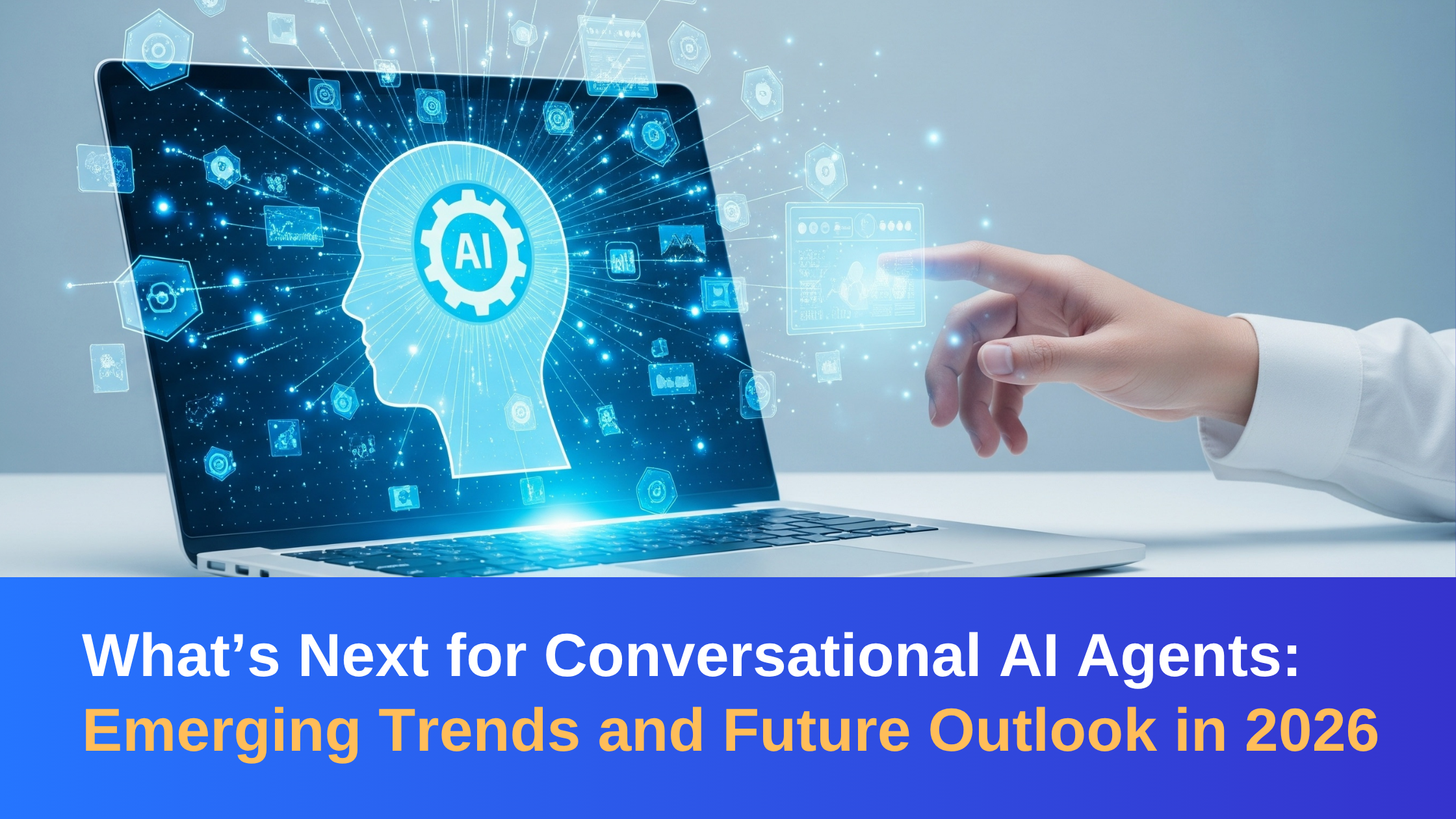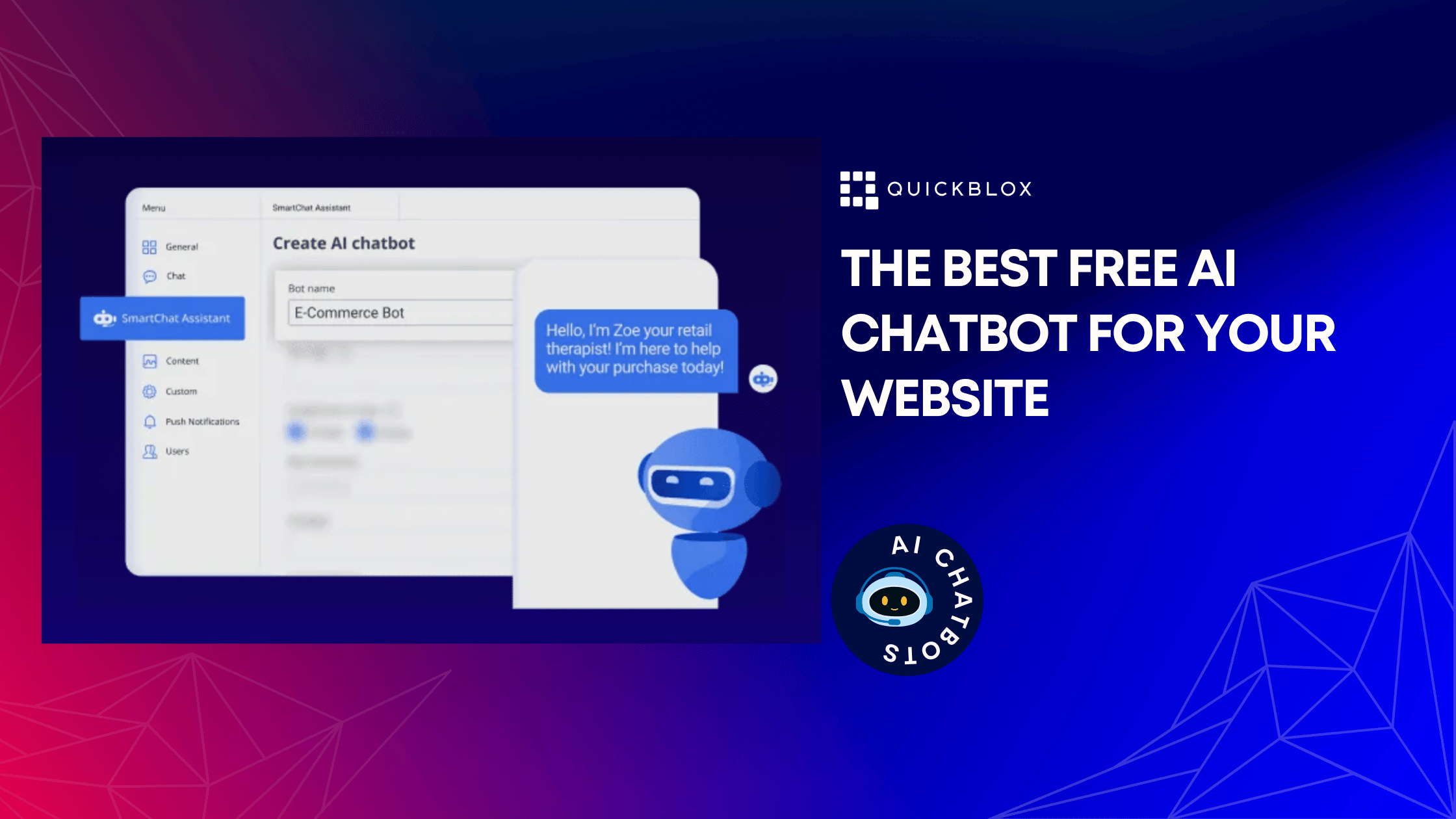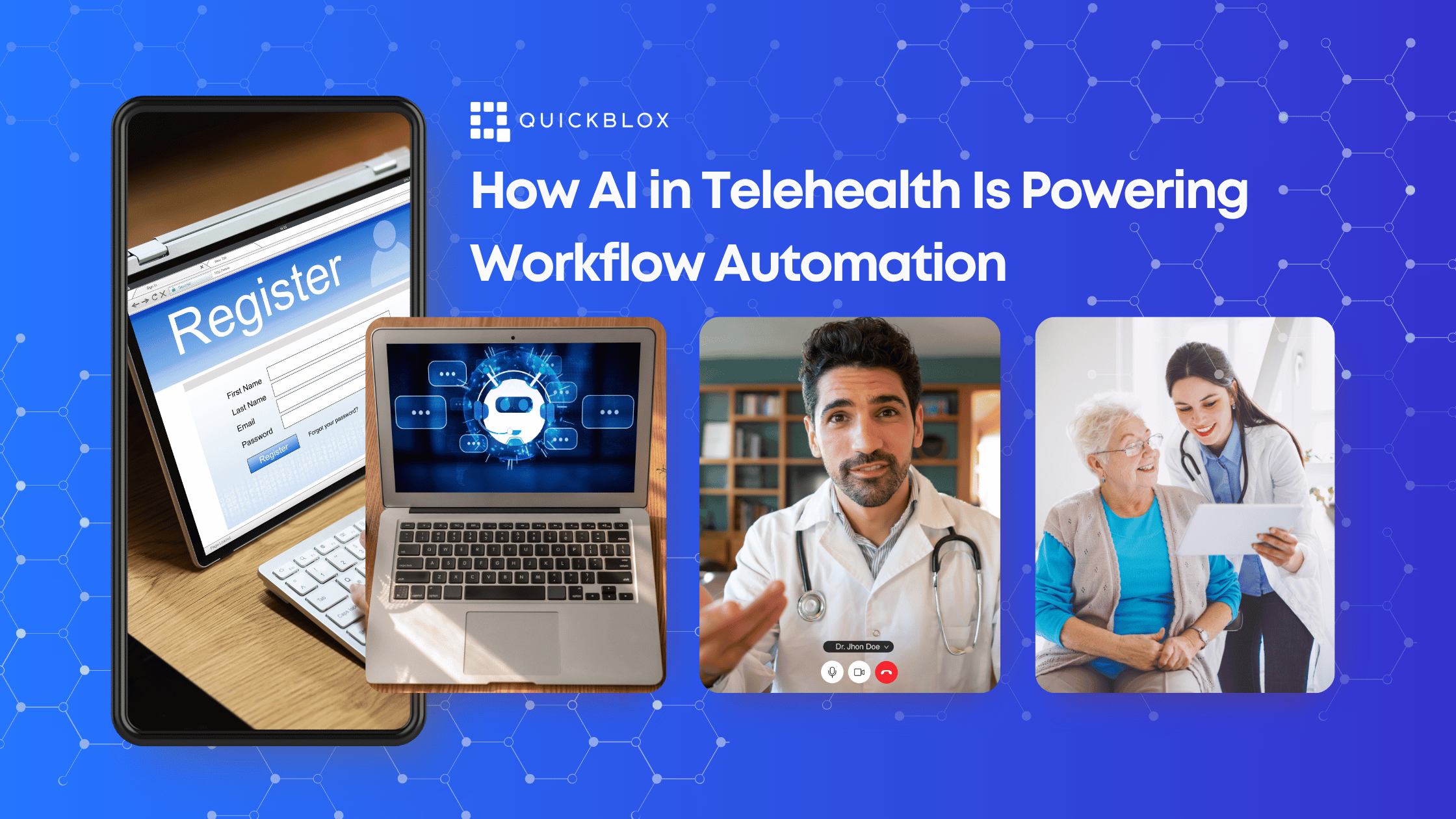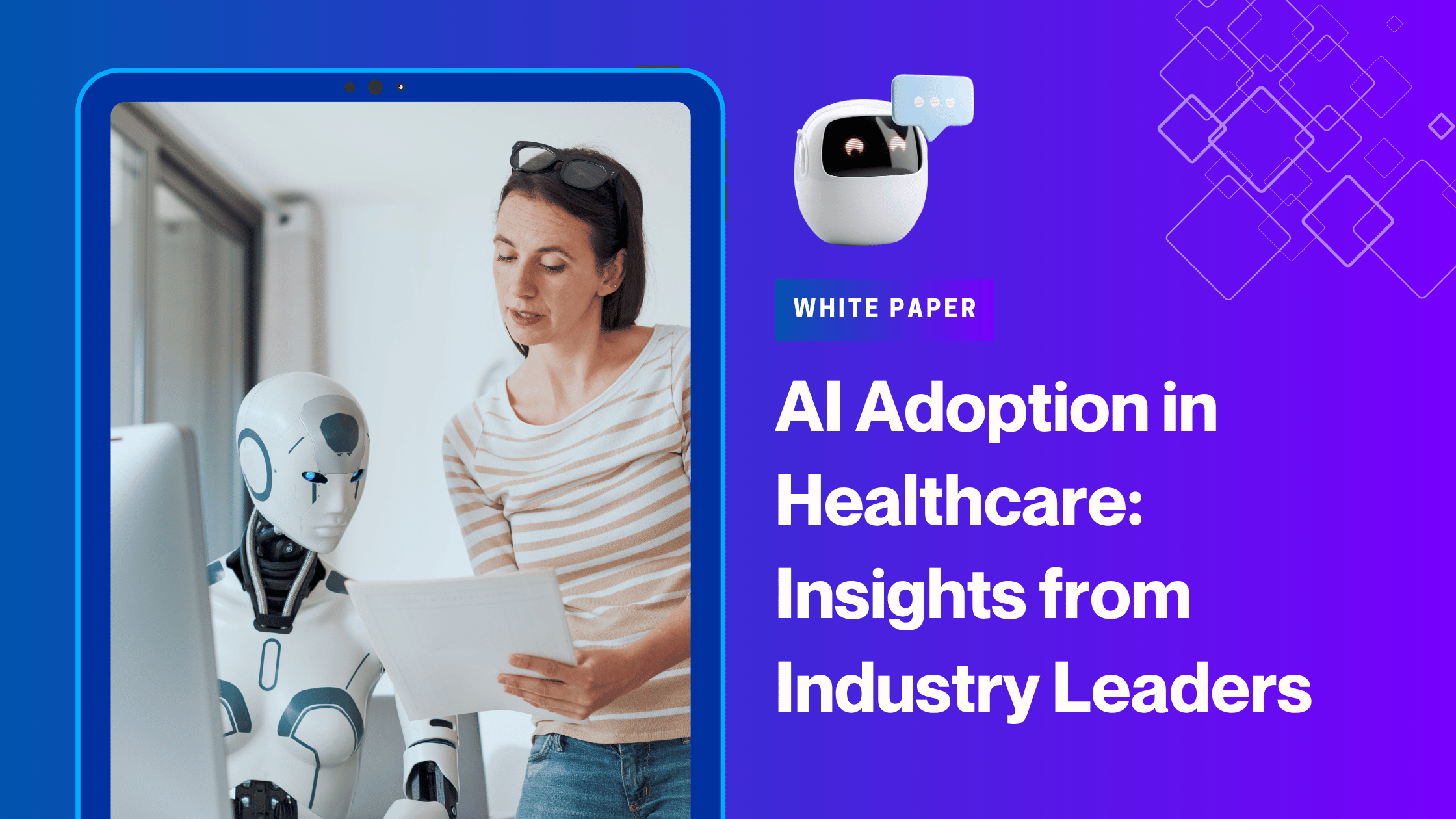
Summary: Conversational AI has moved far beyond basic chatbots. This article explores the key conversational AI trends — from agentic systems and emotional intelligence to trust, personalization, and multimodal design — that are shaping the future of digital interaction. It also looks at how businesses are rethinking workflows as AI agents become everyday partners in communication and collaboration.
Table of Contents
Conversational AI Agents Step Into the Spotlight
Conversational AI agents are having a moment. Everywhere you look — clinics, call centers, online stores — they’re changing how people and businesses talk. The global market for conversational AI is expected to blow past $17 billion by 2026, which says a lot. This stuff isn’t experimental anymore — it’s becoming part of everyday life.
A few years ago, chatbots were mostly there to answer FAQs or send you to the right department. Now they’ve grown up — turning into agentic AI platforms that actually understand intent, take action, and hold conversations that feel human. Think less “chat bubble on a website” and more “digital coworker who never sleeps.”
Huge advances in natural language processing and generative AI made that possible. These systems can now do things we used to need people for — explaining policies, following up on tasks, helping patients book care. And companies aren’t just experimenting anymore. McKinsey calls it the shift from AI curiosity to AI accountability — leaders want numbers now: real ROI, efficiency, and proof the tech delivers.
Here’s the big change: today’s AI agents don’t just wait for questions — they get stuff done. They remember what you said last time, predict what you’ll probably ask next, and sometimes finish the task before you even think about it. They’re becoming less like tools, and more like teammates
So yeah, what’s next? Let’s look at the conversational AI trends likely to shape 2026 — what’s new, what’s working, and how smart companies are turning everyday chat into a real competitive edge.
Learn more about – Conversational AI Agents: Driving Personalized Customer Interactions
Key Conversational AI Trends to Watch in 2026
The world of conversational AI is moving fast — maybe faster than most people realize. A few years ago, companies were just running pilots and demos; now, they’re building at scale. Chatbots have turned into full-blown conversational agents, and organizations are starting to feel the pressure to keep up.
Every industry — from healthcare to retail to banking — is asking the same question: how do we make these AI agents smarter, more human, and more accountable?
Below are the conversational AI trends defining that race as we move towards 2026 — what’s changing under the hood, how it shows up in the real world, and why it matters.
From Reactive to Agentic AI
2026 is shaping up to be the year of “agentic AI” — systems that don’t just sit there waiting for a question, but go ahead and do things. These agents recognize intent, pull the right data, and trigger workflows automatically.
It’s a big shift. A few years ago, a chatbot might’ve sent you to a person for help. Now it finishes the job itself — scheduling, confirming, and following up across whatever tools your team already uses.
Chatbot development platforms are turning into workflow engines. Conversations that once ended with “let me connect you” now just… get done.
Real-world example:
- A hospital in Dubai was struggling with patient no-shows. They rolled out an agentic AI system that didn’t wait for staff to flag problems. Instead, it predicted which patients were most likely to skip appointments by analyzing both live and historical EHR data. The platform surfaced those high-risk cases on a dashboard, so coordinators could call patients, reschedule visits, and even reassign clinicians on the fly as schedules changed throughout the day. The result — fewer empty slots, better patient care, and smoother operations.
2. Empathy Finally Scales
A new trend: bots that actually get people. The best conversational AI platforms can now sense emotion — frustration, confusion, even sadness — and adjust how they respond.
That’s a big deal in industries where tone really matters, like healthcare or finance. These agents aren’t trying to sound human; they’re trying to respond humanly. And that subtle shift makes all the difference.
Real-world examples:
- The mental health chatbot Woebot can tell when a user’s anxious or upset and shifts its tone, offering supportive messages instead of scripted replies.
- Zendesk’s AI platform now detects signs of anger or distress in customer messages and softens responses automatically, helping agents de-escalate tense conversations before they spiral.
The result? Automation that feels a little less robotic — and a lot more human.
3. Voice and Multimodal Take Off
Typing still matters, but let’s be honest — talking is easier. Between smart speakers, wearables, and in-car assistants, people are getting used to speaking to tech, not typing at it.
Modern conversational AI platforms already blend text, voice, and visuals so you can move between them without losing context. Start chatting on your laptop, switch to voice on your phone, finish on video — all part of one continuous thread. It’s not the distant future. It’s 2026.
Real-world example:
- Take Google Assistant. These days, you can start a conversation by typing in a browser, switch midstream to a smart speaker, and then jump into a video call through Google Meet — all without repeating yourself. The context just follows you. That kind of seamless, multi-device experience is exactly what users are coming to expect from every conversational AI platform now.
4. Personalization Gets Real
People don’t want to repeat themselves every time they talk to an AI — and honestly, who can blame them? By now, we expect technology to remember us. Not in a creepy “I’ve been watching you” way, but in a way that’s actually useful.
The latest AI chatbot platforms are building memory right into the experience. Agents can recall your last issue, your tone, or what you liked before. It’s the difference between starting every chat from zero and picking up where you left off.
Imagine a telehealth agent that remembers your last visit — symptoms, medications, or questions — so you don’t have to explain it all again. Or a shopping assistant that already knows your size and taste, saving you the pain of endless scrolling. That kind of memory is what separates the great conversational AI platforms from the forgettable ones.
Real-world examples:
- Take Sephora’s Virtual Artist chatbot, for example. It doesn’t just throw random products at you — it actually remembers you. Your skin tone, your favorite looks, the stuff you’ve tried before — it keeps track so next time you come back, it already knows what fits. No more guessing lipstick shades or scrolling through pages of products that make no sense. It’s small, but that kind of personalization keeps people coming back. It feels less like an app and more like a stylist who remembers your vibe.
- HDFC Bank’s EVA chatbot does something similar, just in a totally different world. It remembers what you asked last time, what kind of banking help you usually need, and even what products you’ve shown interest in. So instead of repeating yourself every time you log in, EVA jumps right in with answers that actually make sense for you.
It’s practical, yeah, but it also feels personal — and that’s what makes the difference.
Personalization isn’t just a nice touch anymore. In 2026, it will be what makes an AI agent feel less like a program and more like a partner.
5. Trust and Responsibility Matter
Now that AI is sitting inside hospitals, banks, and classrooms, trust isn’t optional — it’s the whole foundation.
Businesses want chatbot development platforms that handle data securely, stay compliant, and actually explain what’s going on under the hood. No black boxes.
The smart players aren’t waiting for regulators to catch up — they’re building safety in from day one. “Responsible AI” isn’t a buzzword anymore; it’s becoming a selling point.
Real-world examples:
- The Global Standards and Development Council (GSDC) has launched a Generative AI in Risk and Compliance Certification that helps professionals automate risk assessments and monitor ethical AI governance. It’s training a new generation of teams who know how to keep AI transparent, auditable, and compliant.
- Meanwhile, universities like Johns Hopkins and other professional institutions are rolling out certifications in AI compliance and ethics, especially for healthcare. They’re teaching how to keep AI trustworthy in environments where even a small mistake can have big consequences.
All of this shows where things are headed. In 2026, “responsible AI” won’t be an afterthought or a PR line — it will be part of how platforms are designed. If users don’t trust the system, they won’t use it. It’s that simple.
6. Generative + Retrieval: The Hybrid Model
Here’s where things start to get really interesting. The smartest conversational AI platforms in 2026 won’t just rely on one kind of brain — they’ll be mixing two. One part’s good at creating, the other keeps things grounded in facts.
It’s kind of like pairing a storyteller with a librarian. One dreams up the answer, the other double-checks it.
This setup matters most in places where getting it right actually matters — medicine, law, finance — anywhere a bad answer can cost someone time, money, or worse. You still get the natural flow of generative AI, but with a safety net that keeps it real.
Real-world example:
- IBM’s Watsonx is doing exactly this. It uses something called Retrieval-Augmented Generation (RAG) — basically, it pulls up verified data from databases while it’s generating a response. So when a doctor asks for a patient summary, Watsonx doesn’t just make a guess from old training data. It goes and grabs fresh info from medical research and EHR records, then builds a response that’s both fluent and fact-based.
The payoff? Fewer errors, faster diagnoses, and doctors who can trust what the system gives them.
Same thing in legal work — Watsonx digs into case law and statutes before it says a word, so it’s not just sounding confident, it’s backed up.
This kind of hybrid approach — creative plus grounded — is what’s pushing conversational AI to the next level. It’s not trying to replace humans anymore. It’s learning how to be useful, responsible, and actually helpful in the real world.
From empathy to autonomy, the message is clear: conversational AI isn’t trying to mimic people anymore. It’s here to make people’s jobs easier — to extend what humans can do, not replace them.
Learn more about – From Chatbots to AI Medical Assistants: How Healthcare AI Is Evolving
Behind every great AI conversation is a platform quietly doing the heavy lifting. In 2026, the real breakthroughs won’t be just in how smart large language models have become — they’ll be in how simple it’s getting for teams to build, tweak, and launch their own conversational agents without needing an army of engineers.
By 2026, modern chatbot development platforms won’t just be playgrounds for developers anymore. It will be a shared space where tech teams, marketers, and product folks can all jump in to design how their agents talk, act, and learn.
What Today’s Platforms Look Like
Most of the best conversational AI platforms today blend three key ingredients:
- No-code and low-code builders — so anyone can drag, drop, and shape conversations visually.
- LLM integration layers — connecting prompts, company data, and APIs so agents can sound smarter and stay accurate.
- Analytics and learning tools — that track real interactions and help teams improve tone, flow, and outcomes over time.
Put together, these tools turn an AI chatbot platform into more than a messaging tool. It’s basically the operating system for how a business communicates.
- A marketer can tweak onboarding flows or tone without touching code.
- A customer success lead can review conversation logs and spot friction points.
- Developers can hook in APIs so the agent doesn’t just talk — it acts: sending invoices, booking calls, or pulling records in real time.
What Sets the Best Platforms Apart
The best conversational AI platforms share a few traits that make them stand out:
- Action-first design. These platforms don’t stop at conversation. They turn talk into results — from a patient record update to an automated refund.
- Built-in knowledge grounding. With techniques like retrieval-augmented generation (RAG), agents can tap verified data mid-conversation, making them reliable even in high-stakes industries like healthcare or finance.
- Cross-agent collaboration. Instead of a single chatbot doing everything, the next wave of conversational AI platforms supports fleets of agents — one for support, one for sales, one for compliance — all talking to each other behind the scenes.
- Customization and tone control. Every brand has a voice. Modern platforms let you fine-tune personality, tone, and even emotional range so agents sound on-brand across every channel.
- Security built in. In 2026, compliance won’t be an afterthought. The leading chatbot development platforms come with encryption, audit trails, and data residency options baked right into the design.
Learn more about – AI Chatbot Integration: A Complete Guide for Adding AI to Your Website
From Tools to Partners
The biggest shift? Businesses aren’t just buying software anymore — they’re looking for partners. Vendors that help them train domain-specific models, fine-tune agent behavior, and plug into existing systems are the ones winning trust.
Over the next year, expect more companies to move from buying “chatbots” to building digital teams — groups of conversational agents that handle the routine stuff so humans can focus on the creative, complex work only people can do.
That’s where the next big conversational AI trend lies — not in replacing people, but in giving them smarter, faster, more capable digital teammates.
Future Outlook: Conversational AI Agents as Business Partners
So where’s all this heading? The next phase of conversational AI isn’t about flashier bots or smoother scripts — it’s about working together.
By 2026 and beyond, conversational agents won’t just pop up when you click “help.” They’ll sit next to us — handling the boring stuff, spotting problems early, surfacing insights we might miss. “Virtual assistant” doesn’t really cover it anymore. These things are turning into digital coworkers.
From Chat to Collaboration
Built on smarter conversational AI platforms, these agents don’t just wait for a command. They learn as they go, remember what’s important, and start to fit into the rhythm of real work.
- In support, they’ll fix bugs or customer issues before they blow up.
- In healthcare, they’ll flag risks before anyone notices symptoms.
- In finance, they’ll quietly keep compliance clean and reports tidy.
And honestly, some of that’s already happening — just not loudly yet.
The Multi-Agent Workplace
Agentic AI equates to systems that take initiative. Some companies are already running small digital teams — not one AI, but a handful, each doing a job.
Picture it:
- A scheduling agent lines up your calls.
- A knowledge agent reads the reports and drops you a short summary.
- A support agent closes out a customer ticket before you finish lunch.
They each do their bit, passing data to the next, no ego, no downtime. It’s messy, experimental, but it’s the start of something big — workflows that almost run themselves.
Workflows, Not Workers
As this stuff improves, the shape of work is going to change — probably faster than most people expect. Managers won’t just hand tasks to people; they’ll hand them to platforms. Humans will focus on the creative, emotional, problem-solving parts. The repetitive, rules-based stuff? AI’s already picking it up.
It’s not about replacing anyone — it’s about getting rid of the grind so people can actually do the good stuff.
Building Trust Along the Way
Of course, all of this depends on trust.
If AI’s going to make choices or take action, we need to know why. No black boxes. The best conversational AI platforms are already starting to show their reasoning — explaining what happened, and how. That’s what keeps humans in control.
And as this tech spreads, ethics and transparency are going to matter as much as performance. You can’t just build fast anymore. You’ve got to build responsibly — because once trust goes, everything else goes with it.
The Human Bit
Here’s the funny thing: the future of AI isn’t really about the AI. It’s about people.
It’s about giving humans a bit more breathing room — time to think, create, and connect — while the machines quietly keep things moving.
The companies that figure out that balance first — the right mix of humans and AI agents — will set the tone for what comes next. Not just faster work, but better work.
Conclusion
The future of AI agents is already here — and it’s moving fast.
If you’re ready to build smarter, more human conversations into your app or platform, QuickBlox can help. Our AI-powered communication platform makes it easy to create secure, scalable, and fully branded AI agents that work the way your business does.
Let’s talk about what you want to build next.
Talk to a sales expert
Learn more about our products and get your questions answered.
Contact sales
What is a conversational AI platform?
Think of it as the base that powers chatbots and AI agents. It’s software that helps teams build, manage, and train these systems so they can actually understand people, hold a natural chat, and get things done — whether that’s over text, voice, or video.
How can businesses benefit from using conversational AI agents?
They save time, plain and simple. AI agents handle the repeat questions, book things, send reminders — all the routine stuff that eats up hours. That means your team can focus on real problems while customers still get quick, helpful replies.
What industries can benefit most from conversational AI platforms?
Pretty much any field that talks to people all day. Hospitals, banks, online shops, schools — all of them are using conversational AI agents to make support faster and less painful. The best conversational AI platforms just make things flow smoother.
How do conversational AI platforms stay updated with trends?
The good ones never sit still. They plug into new large language models, test better tools, and use smarter tricks like retrieval-augmented generation (RAG) to stay sharp. Basically, they keep learning so your AI doesn’t fall behind.
How do conversational AI platforms handle multilingual support?
Most AI chatbot platforms can now switch languages on the fly. They spot what someone’s speaking and answer in that same language without losing tone or meaning. No clunky translations — just natural, smooth replies.
What are the future trends shaping conversational AI platforms in 2026?
You’ll see more agentic AI — chatbots that act on their own — plus better emotion detection, smarter data grounding, and stronger privacy rules. The focus now is on making AI agents useful, safe, and a little more human.








